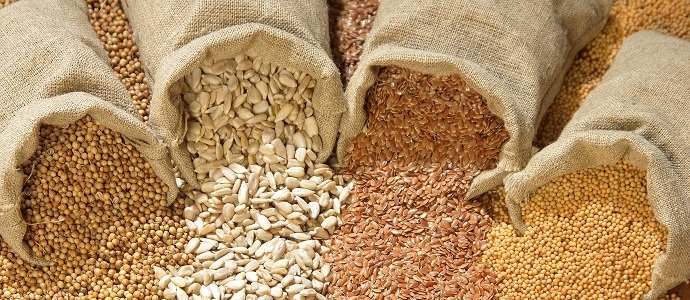
Introduction
Maintaining the quality and freshness of produce is essential for ensuring that consumers receive safe and nutritious food. Fresh produce contains vital nutrients that contribute to a healthy diet, but it is also susceptible to spoilage caused by factors such as temperature, humidity, light, and airflow. During the summer months, high temperatures can pose a significant challenge for farmers, distributors, and consumers, as they strive to protect the quality and freshness of produce. In this blog, we will discuss the factors affecting the quality and freshness of produce and best practices for storing and transporting produce in summer temperatures.
Factors Affecting the Quality and Freshness of Produce
Several factors affect the quality and freshness of produce. The following are the main ones:
- Temperature: Temperature is one of the most critical factors affecting the quality and freshness of produce. Most fruits and vegetables are sensitive to temperature changes, and exposure to high temperatures can cause them to ripen too quickly, lose moisture, and spoil. On the other hand, exposure to low temperatures can cause chilling injury, which can lead to discoloration, softening, and decay.
- Humidity: Humidity is another critical factor affecting the quality and freshness of produce. Some fruits and vegetables, such as lettuce, broccoli, and berries, require high humidity to maintain their freshness and crispness. However, other fruits and vegetables, such as tomatoes, onions, and potatoes, require low humidity to prevent mold and decay.
- Light: Light exposure can also affect the quality and freshness of produce. Some fruits and vegetables, such as bananas and tomatoes, are sensitive to light and can develop sunscald or discoloration when exposed to direct sunlight. However, other fruits and vegetables, such as leafy greens and herbs, require light to maintain their color and flavor.
- Airflow: Airflow is essential for maintaining the quality and freshness of produce. Good airflow can help remove excess heat and moisture, prevent the accumulation of ethylene gas, and reduce the risk of mold and bacterial growth. However, poor airflow can lead to the buildup of heat and moisture, which can cause produce to spoil.
Best Practices for Storing Produce in Summer Temperatures
To protect the quality and freshness of produce during summer temperatures, farmers, distributors, and consumers must adopt best practices for storing produce. The following are some of the best practices for storing produce in summer temperatures:
- Choosing the right storage location: The storage location is critical for maintaining the quality and freshness of produce. Ideally, the storage location should be cool, dry, and well-ventilated. It should also be away from direct sunlight and heat sources, such as radiators, ovens, or stoves. Additionally, the storage location should be free from pests, such as rodents or insects, which can cause damage to the produce.
- Temperature control: Temperature control is essential for protecting the quality and freshness of produce. The ideal temperature for storing produce varies depending on the type of produce. Generally, most fruits and vegetables require a temperature range between 32°F to 55°F. However, some fruits and vegetables, such as tropical fruits, require a temperature range between 55°F to 70°F. To maintain the ideal temperature, farmers, distributors, and consumers can use refrigerators, coolers, or other temperature-controlled storage facilities.
- Humidity control: Humidity control is also critical for protecting the quality and freshness of produce. The ideal humidity level for storing produce varies depending on the type of produce. Generally, most fruits and vegetables require a humidity level between 80% to 95%. To maintain the ideal humidity level, farmers, distributors, and consumers can use humidifiers, fans, or other humidity-controlled storage facilities.
- Airflow management: Airflow management is essential for maintaining the quality and freshness of produce. Good airflow can help remove excess heat and moisture and reduce the risk of mold and bacterial growth. To maintain good airflow, farmers, distributors, and consumers can use fans, vents, or other air-circulating devices. They should also avoid overcrowding produce, which can restrict airflow and lead to spoilage.
Tips for Transporting Produce in Summer Temperatures
Transporting produce during summer temperatures poses additional challenges for farmers and distributors. The following are some tips for transporting produce in summer temperatures:
- Pre-cooling produce: Pre-cooling produce is essential for protecting the quality and freshness of produce during transportation. Pre-cooling helps remove excess heat and moisture and reduce the risk of spoilage. Farmers and distributors can pre-cool produce by using refrigerated rooms, forced-air coolers, or hydrocoolers before transporting.
- Using insulated containers: Insulated containers, such as refrigerated trucks or containers, can help maintain the ideal temperature and humidity level during transportation. These containers can help protect produce from exposure to direct sunlight and heat sources.
- Avoiding direct sunlight and heat exposure: Direct sunlight and heat exposure can cause produce to spoil quickly. Farmers and distributors should avoid leaving produce in direct sunlight or heat sources, such as car trunks or uncovered trucks.
- Monitoring temperature and humidity during transportation: Monitoring temperature and humidity levels during transportation is critical for protecting the quality and freshness of produce. Farmers and distributors can use data loggers, thermometers, or hygrometers to monitor temperature and humidity levels during transportation.
Conclusion
In conclusion, protecting the quality and freshness of produce during summer temperatures is essential for ensuring that consumers receive safe and nutritious food. Factors such as temperature, humidity, light, and airflow can affect the quality and freshness of produce, and farmers, distributors, and consumers must adopt best practices for storing and transporting produce. Choosing the right storage location, temperature control, humidity control, and airflow management are critical for maintaining the quality and freshness of produce during summer temperatures. Additionally, pre-cooling produce, using insulated containers, avoiding direct sunlight and heat exposure, and monitoring temperature and humidity during transportation are essential for protecting the quality and freshness of produce during transportation. By adopting these best practices, farmers, distributors, and consumers can ensure that fresh produce is available year-round and contribute to a healthy and sustainable food system.

